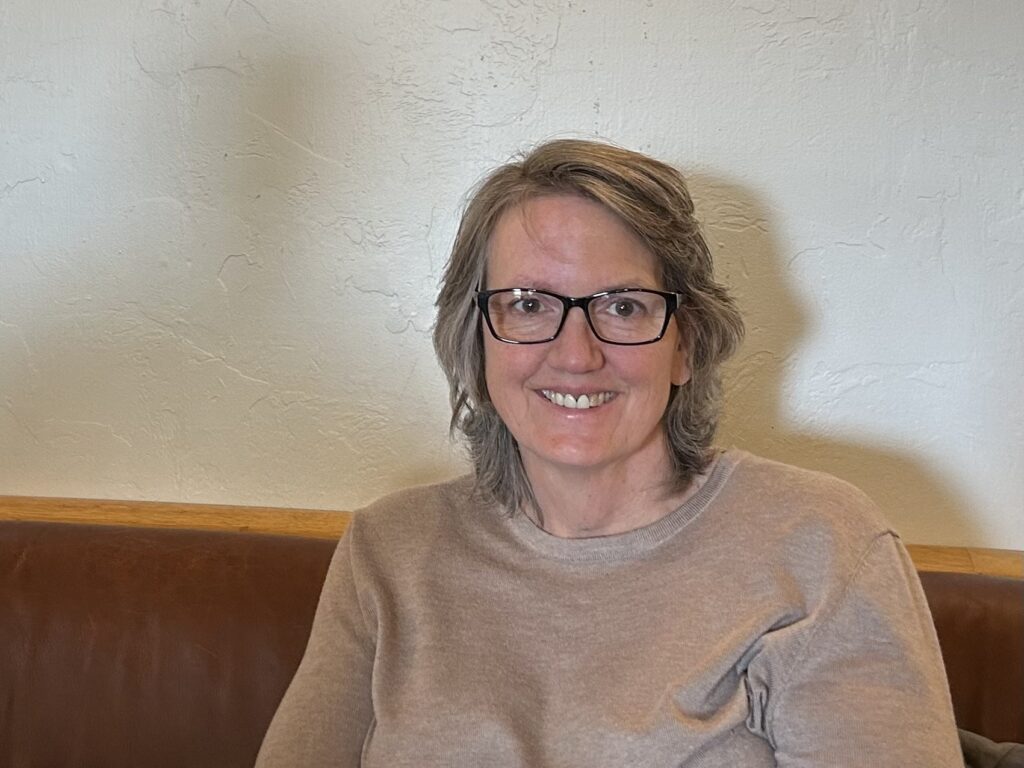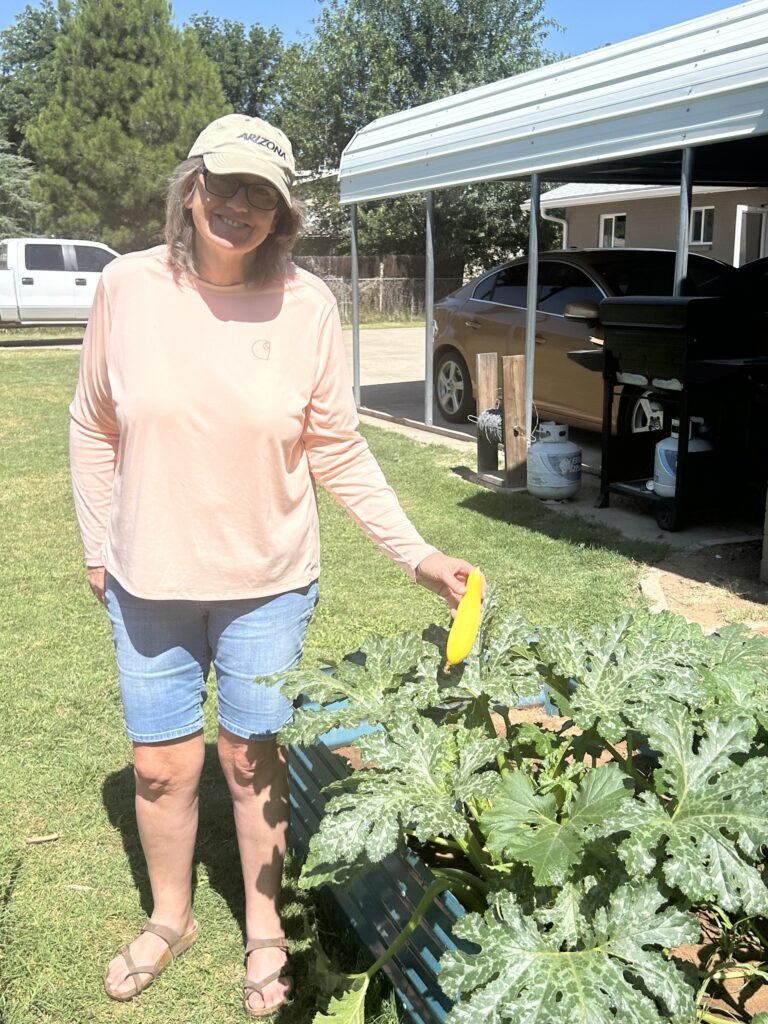
Ivy Blog
Seeds of Hope: Sisters Face Glioblastoma Together
- October 31, 2024
- Ivy Center
- Posted in Patient Stories

Clarissa Allen tends to the sunflowers in her garden. They stand tall, taller than she is, turning their faces to the sun. These flowers grew from seeds gifted to her at a brain tumor support group. They symbolize Clarissa’s journey of resiliency and hope while facing brain cancer.
Clarissa was diagnosed with glioblastoma in July 2022. She began having trouble remembering simple words. Her sister, Eva Voorhees, became concerned when she noticed a slight droop on one side of Clarissa’s face and she seemed to be dragging one foot. Clarissa’s primary-care doctor attributed it to dementia but Clarissa was only 60 years old and Eva had a hunch it was something else. The two sisters went to the emergency room and doctors scanned Clarissa’s brain, which revealed a large mass. Doctors told Eva that her sister would die if the tumor was not removed immediately. Clarissa underwent emergency brain surgery.

After surgery to remove the tumor, Clarissa completed rounds of radiation and chemotherapy and was declared cancer free in November 2023. It didn’t take long for the brain tumor to return, as glioblastoma often does. In June 2024, a routine MRI showed another mass in Clarissa’s brain.
This time, Clarissa and Eva wanted to try a different approach.
“The status quo isn’t good enough,” Eva says.
A clinical trial for glioblastoma
They came to the Ivy Brain Tumor Center, and Dr. Nader Sanai, director of the Ivy Center, performed a complicated surgery to remove the tumor. Because of the specific genetic composition of Clarissa’s tumor, she was eligible for a Phase 0 clinical trial, testing a new drug for glioblastoma.
The sisters knew Clarissa’s experience on the clinical trial would provide valuable data to advance the development of the drug. Clarissa says, even if this new therapy doesn’t help her, it might help someone else.
After treatment for the tumor recurrence, Clarissa experienced vision cuts and aphasia, a loss of the ability to understand and express language, as well as read and write. Eva says the cognitive impairments were the hardest to accept. Her sister is educated and highly intelligent. She graduated 10th out of 600 in her class. Clarissa earned two undergraduate degrees in accounting and software science and worked as a CPA at the University of Arizona. After treatment, she struggled to find the right words and put her thoughts together. The Neuro-Rehabilitation Center at Barrow Neurological Institute provided physical, occupational and speech therapy that has helped her regain some of those skills.
Clarissa lost her husband seven years ago to pancreatic cancer, so Eva moved in with Clarissa to provide round-the-clock care for her sister. Eventually, Clarissa relocated to Eva’s house, into a casita with a garden.
The role of a brain tumor caregiver
The decision to become Clarissa’s caregiver was not easy. Eva and her husband had become empty nesters once their sons moved out. Life had quieted down. They planned to travel and enjoy retirement. Being Clarissa’s caregiver changed their plans.

Although, Eva wouldn’t have it any other way. She couldn’t allow her sister to live in an assisted living facility. It didn’t feel right, she says.
Eva’s husband, Chris, helps with Clarissa’s diet. He makes sure she eats healthy meals. Clarissa admits it doesn’t always taste great, but she doesn’t complain. Clarissa’s cognitive impairments make simple instructions difficult to understand, resulting in Eva’s need to repeat herself often, which requires patience, Eva says.
To balance the responsibilities of caregiving, Eva makes an effort to carve out time for herself. She exercises every morning, either doing yoga or hiking, and takes short day trips. She arranges for a friend to look after Clarissa and another friend comes over and reads with her. In the early days of the diagnosis, Eva and Clarissa’s friends knew Eva wasn’t a great cook, so they often brought meals over to lighten the load for the family.
“I’m grateful for this disease in some respects,” Eva says. “It’s made me realize how much people care about us.”
Today, Clarissa grows vegetables in her garden, alongside the sunflowers. To Eva, the sunflowers are a reminder that although they face this difficult situation, there is still hope.

This story is for general health information only and is not meant to be used as medical advice, diagnosis or treatment. Please consult your physician or healthcare provider before beginning any treatment protocol or with any questions. This story reflects the health status of this particular patient at the time the story was written and photographs were taken. The patient’s condition may have changed over time.
